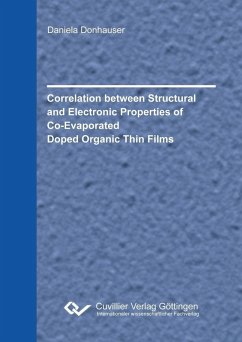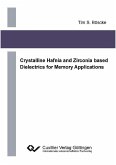Devices based on organic semiconductors, like organic light emitting diodes (OLEDs) or organic solar cells, often comprise electrochemically doped charge transport layers, which improve the performance of these devices. Although very efficient devices can be realized nowadays, a comprehensive description of the physical processes taking place in electrochemically doped thin films is still missing. For instance, it was shown for a variety of different material systems that the doping efficiency, defined as the number of free charge carriers compared to the number of incorporated dopants, often amounts to only a few per cent. The organic semiconductor CBP (4,4’-Bis(N-carbazolyl)-1,1’-biphenyl), doped with the transition metal oxide molybdenum oxide (MoO3), is used here as a model system to investigate the origin for this low doping efficiency. Results from different measurement techniques, like electron tomography, EF-TEM, PES, FTIR-spectroscopy and (temperature- dependent) electrical measurements were correlated to get insight into the origin of the low doping effiencies and to obtain a model to describe charge transport in MoO3-doped CBP films as a function of the doping concentration.
Dieser Download kann aus rechtlichen Gründen nur mit Rechnungsadresse in A, B, BG, CY, CZ, D, DK, EW, E, FIN, F, GR, HR, H, IRL, I, LT, L, LR, M, NL, PL, P, R, S, SLO, SK ausgeliefert werden.









